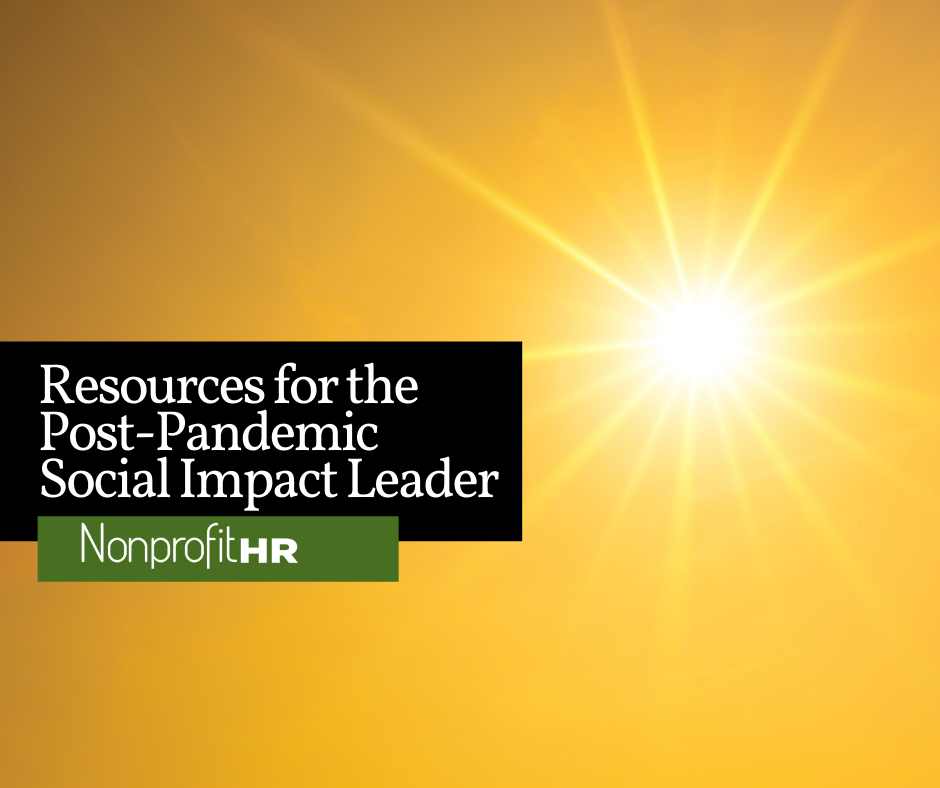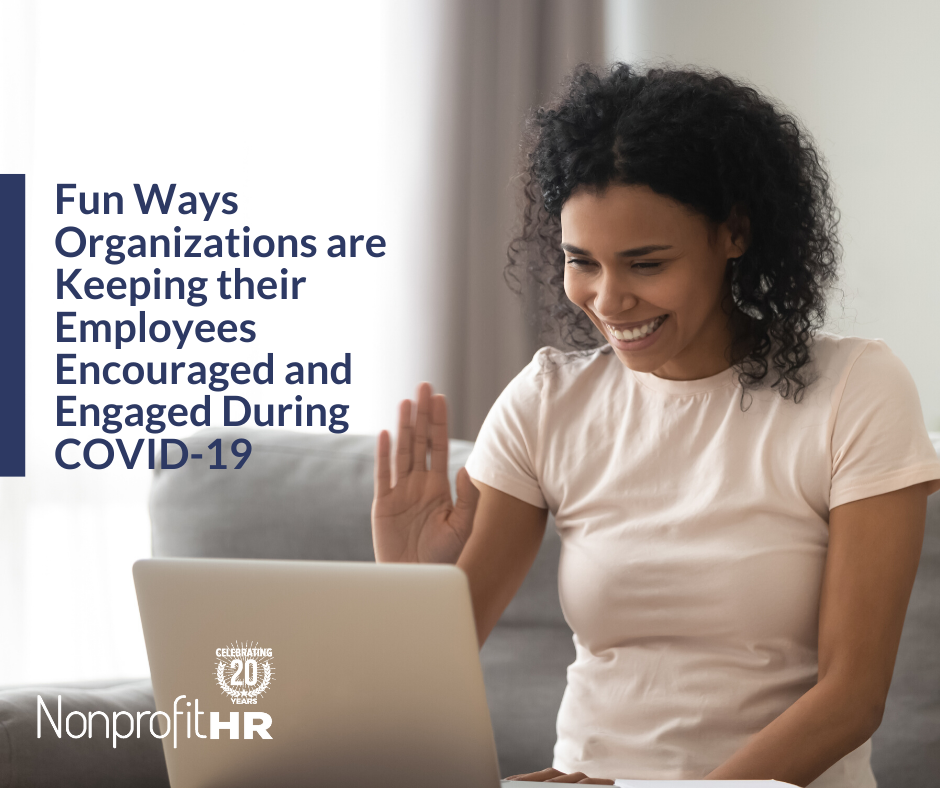WTOP: 5 ways nonprofits can…
Written by Julie Gallion, PHR
Senior HR Business Partner and Benefits Practice Lead
Nonprofit HR
Download a webinar on this topic! See below!

The new tax will equate to .62% (.0062) of all quarterly wages for each employee who is also covered under the DC unemployment act. There is no limit on compensation under this regulation. The new tax will be paid via the DC Department of Employment Services’ (DOES) website, similar to how your unemployment wages are reported and taxes paid. Though employers will access the website through their existing DC DOES log in information (currently used to report and pay unemployment tax) the Paid FMLA portal has yet to be built.
To date, only the general concept of the benefits has been released. DC DOES is working on guidance to be released later this year on how to interpret the details for both employer administrators and individual beneficiaries. There is opportunity for employers to influence the guidance by emailing DC DOES at [email protected].
Up close, DC Paid FML seems rather simple. An employee goes on leave for the following reasons and is paid through the DC government. Under all leave circumstances, employees are generally paid 100% of their salary up to a maximum of $1,000 per week. However, it’s not really that clear cut, therefore, you can expect a follow-up article from Nonprofit HR providing additional insight.
Download a webinar on this topic! See below!

- Maternity leave-8 weeks
- Paternity leave-8 weeks
- Family leave-6 weeks
- Disability leave-2 weeks
There are many, many challenges with this new regulation from the employer perspective that need to be ironed out.
Whether you’re an employer or employee, think of the new regulation as a way to pay employees for their FMLA. The trick is to figure out how to incorporate this into your existing policies including state and federal FMLA, Short Term Disability insurance, maternity/paternity leave policies, earned leave policies and leave banks.
This new regulation applies to all employers including employers with just one employee and the self-employed and the regulation has no minimum hours worked requirement.
Technically DC DOES is interpreting the benefits side of the law to reflect that employees are only eligible for the benefits based on the amount of DC PFL tax paid. Because the tax due matches unemployment and is paid quarterly, an employee who is newly working in DC, and whose employer has not yet paid the quarterly tax, would not actually be eligible for benefits. Additionally, the amount of the employee’s benefit is based on past wages reported on the unemployment wage report. Therefore, an employee (and employer) can’t assume that the benefit will be paid based on the employee’s current salary. It is important to note that it is the employer’s responsibility to track the time off under the DC PFML rules as the DC DOES may ask for documentation when considering approval of a claim. Back to the tax…

Page 12 of the Department of Employment Services: Unemployment Insurance Handbook for Employers contains the rules related to unemployment tax for employees who do not work exclusively in DC.
Download a webinar on this topic! See below!
While DOES works on guidance related to the benefit, here are some action items for you to take now.
- Become familiar with your unemployment reports and process for reporting wage and tax to the DOES for unemployment. You will need to understand whether an employee could receive benefits from the DC PFL and how much the DOES may pay if the claim is approved which, as state above, is based on previous wage reports. This will be important when administering the employees leave through existing time off pay policies such as STD insurance and or existing maternity, paternity, or earned leave policies.
- Communicate with your payroll department, or payroll provider to understand the payroll company’s plan to report wages and pay the tax on your behalf if applicable.
- Work with your budget managers to ensure this new tax is accounted for in your payroll tax budget.
- It will be important to stay up to date on guidance as most likely, new policies will need to be added to handbooks and STD, FMLA and leave policies will need to be reconsidered.
- Don’t go it alone! Reach out to Nonprofit HR if you are stumped anywhere along the process. Communicate with your Broker about your existing STD policy. There are good reasons to maintain your existing policy but you’ll need to understand how it may integrate into the DC PFML.

- Paying the tax.
- Small employers who are not used to administering employee benefits or following DC employment regulations may be challenged with paying the tax, reporting and calculating wages and explaining benefits to employees.
- Tracking FMLA in a way that is acceptable to the DC government. Many employers do not have systems set up to consistently keep track of whether leave taken was considered FMLA. While the employers generally do a good job of qualifying a leave as FMLA and approving such leave and maintaining records of start and end dates, many are missing the mark on tracking whether an employee was on FMLA on a specific date, or if she was simply sick. This generally applies to employers who are flexible with their leave and whose employees don’t tend to take advantage of FMLA and therefore, the reason for leave has not been a concern of theirs. While this may seem obvious, it’s particularly important for organizations that tend to be relaxed about tracking FMLA for reasons such as childbirth. Three to four pieces of information to track are as follows:
- First date of FMLA
- Baby’s birth date (to account for the amount of leave taken for the birth mother’s recovery and the amount taken for bonding with the baby.
- Return to work date
- Continued intermittent leave dates.
- Pay type during leave. I believe this is a question that the DC Department of Employment Services may ask when processing claims.
- Helping employees understand the potential tangled web of Federal FMLA, DC FMLA, your leave policies and short-term disability.
- New DC PFL posters will be required.
Download a webinar on this topic! See below!
As you can see from what I’ve outlined, this will be an ever-changing process with much to be solidified. We understand that this is likely to complicate your leave administration, we are here to help, as failure to reduce complications or inaccuracies can lead to employer fines or worse.
Nonprofit HR’s benefits team will continue to provide guidance and be here as a thought partner to you during the administration of this new regulation.
Julie Gallion, PHR
Senior HR Business Partner, Benefits Practice Lead
[email protected]






























